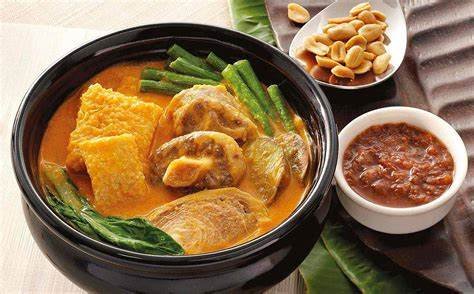Food is more than just nourishment; it’s a reflection of culture, history, and tradition. Across the globe, every country has its iconic dishes, each telling a story of its people and their evolution. From humble beginnings to becoming staples of global cuisine, these iconic dishes have shaped how we experience and enjoy food. Let’s explore the history of some of the most famous dishes that have stood the test of time.
1. Pizza (Italy)
Pizza, in its modern form, is an Italian invention, but its roots trace back to ancient civilizations. The earliest forms of flatbreads topped with herbs and oils can be traced to the Egyptians and Greeks. However, the modern pizza as we know it originated in Naples in the 18th century. Legend has it that Queen Margherita of Savoy was served a pizza with tomatoes, mozzarella, and basil, representing the colors of the Italian flag, and thus the Margherita pizza was born. Today, pizza is loved worldwide, with countless variations and toppings.
2. Sushi (Japan)
Sushi’s history dates back over a thousand years. It began as a preservation technique in Southeast Asia, where fish was fermented with rice to keep it fresh. In Japan, during the Edo period (1603-1868), sushi evolved into its modern form, where raw fish was served with vinegared rice. The iconic nigiri sushi, featuring a slice of raw fish atop rice, became popular in Tokyo in the 19th century. Sushi has now become a global delicacy, with its intricate presentation and emphasis on freshness making it beloved worldwide.
3. Tacos (Mexico)
The taco is a quintessential Mexican dish with roots dating back to pre-Columbian times. Indigenous Mexicans are believed to have used tortillas to hold fillings like fish or small game. The word “taco” itself, which means “plug” or “wadding” in Spanish, was used to describe the way tortillas were wrapped around food. The modern taco as we know it, often filled with meats like pork, beef, or chicken, gained popularity in the early 20th century, especially with the rise of street vendors. Today, tacos are a beloved street food worldwide, available in various fillings and styles.
Delicious Meals and Entertainment
ImadeDinner.net inspires home cooks with easy-to-follow recipes and creative meal ideas for every occasion. After preparing a delightful dish, unwind with the stellarspins Casino Room, where online gaming adds excitement to your relaxing evenings. Combining culinary creativity with thrilling entertainment creates the perfect balance for leisure time. Discover new flavors in the kitchen and new wins online all in one place.
4. Pasta (Italy)
Pasta is an iconic symbol of Italian cuisine, but its history is not entirely clear. Some believe that the Chinese introduced pasta to Italy in the 13th century, while others argue that it was developed independently in Italy. Early pasta-like dishes have been found in Roman times, but pasta as a staple food began to spread in Italy in the 12th century, with the invention of dried pasta allowing it to be stored and transported easily. Over time, pasta became a culinary symbol of Italy, with varieties ranging from spaghetti to ravioli, influencing global cooking.
5. Biryani (India)
Biryani, a flavorful rice dish often paired with meat, has its origins in South Asia, with roots believed to be from Persian and Mughal influences. The name “biryani” comes from the Persian word “biryan,” meaning “fried” or “roasted.” It was likely brought to India by the Mughals in the 16th century. The dish’s popularity skyrocketed in the Indian subcontinent, especially in regions like Hyderabad, where it became a signature dish. Biryani’s rich blend of spices, meat, and rice has made it a favorite worldwide, often with regional variations such as Hyderabadi, Kolkata, and Lucknowi biryanis.
6. Croissant (France)
The croissant, a beloved breakfast pastry, has its origins in Austria, not France. Its history dates back to the 17th century, when it was inspired by the Turkish crescent-shaped pastries symbolizing the Ottoman Empire’s defeat. The pastry made its way to France in the 19th century when Austrian princess Marie Antoinette married King Louis XVI. As French bakers refined the recipe, the croissant became synonymous with French culinary artistry, its buttery, flaky texture making it a global breakfast favorite.
7. Paella (Spain)
Paella, a famous Spanish rice dish, originated in Valencia, on the eastern coast of Spain, during the mid-19th century. It was created by local farmers and laborers who used available ingredients like rice, saffron, and vegetables, and added meats such as rabbit, chicken, and seafood, depending on what was available. Over time, paella became a symbol of Spanish cuisine, with many regional variations, including seafood paella and mixed paella. Its bright saffron flavor and rich texture make it a dish loved by many worldwide.

8. Curry (India)
Curry, a flavorful and aromatic dish, is often associated with Indian cuisine, though its origins are complex. While the modern-day curry is commonly linked to the British colonial period, where British officers took Indian spices and recipes back to Europe, the concept of spiced, sauced dishes existed in India long before. In India, curry refers to a variety of spiced gravies or sauces, often served with rice or bread. The dish spread throughout Southeast Asia and the Caribbean, where it was adapted to local tastes and ingredients.
9. Dim Sum (China)
Dim sum refers to a collection of small, bite-sized dishes traditionally served in Chinese teahouses. The tradition began in the southern region of China during the Cantonese tea culture in the 10th century, where tea was served with small snacks or dumplings. Dim sum became popular during the Qing Dynasty, and now it’s an integral part of Cantonese cuisine, often eaten in a communal setting with tea. It has expanded internationally and is widely loved for its variety, from dumplings and buns to rolls and tarts.
10. Fish and Chips (United Kingdom)
Fish and chips, a classic British dish, has become synonymous with British cuisine. It was introduced in the 19th century, likely from Jewish immigrants in London who served fried fish in batter. The dish gained popularity in working-class communities, and by the 20th century, it became a staple food for the British working class. Its iconic combination of crispy fried fish and golden fries is still a favorite today, often served with mushy peas and tartar sauce.




